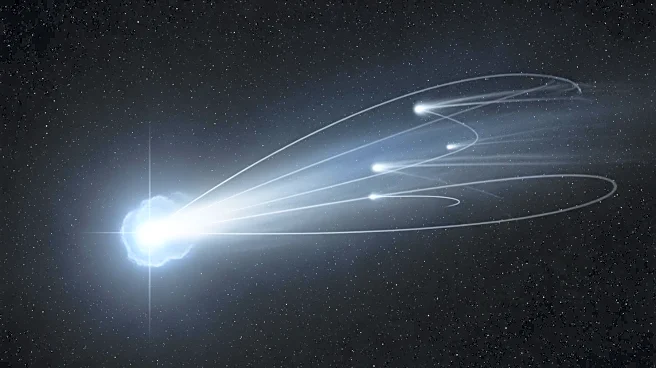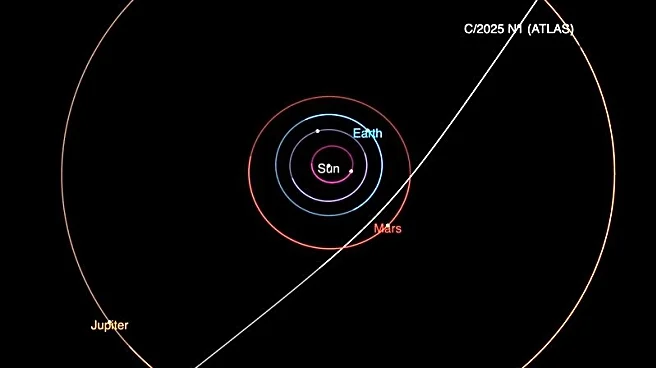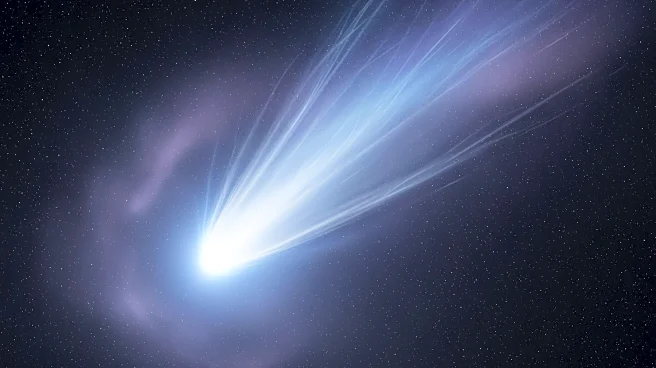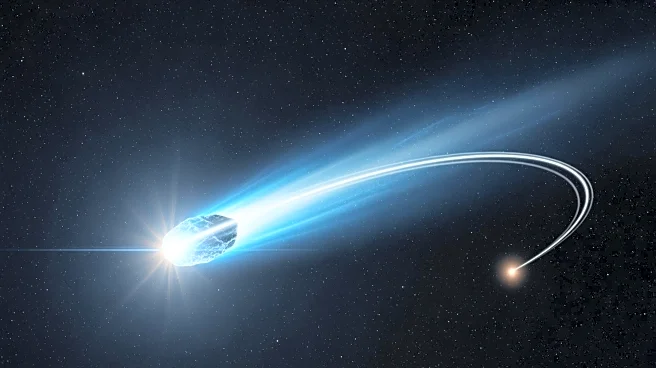What's Happening?
NASA has unveiled new images of the interstellar object known as 3I/ATLAS, which has been identified as a comet. The discovery was initially made on July 1, 2025, by the Atlas survey telescope in Chile,
funded by NASA. The images were captured during the comet's solar conjunction on October 21, 2025, when it was positioned on the opposite side of the Sun from Earth. According to the Royal Astronomical Society, 3I/ATLAS may have originated from the Milky Way's thin disk layer, which consists of newer stars, or from the thick disk, composed of much older stars. If the comet is from the thick disk, it could be over seven billion years old, predating the solar system itself.
Why It's Important?
The release of images of 3I/ATLAS provides valuable insights into the composition and origins of interstellar objects. Understanding the age and origin of such comets can offer clues about the formation and evolution of the Milky Way and the solar system. This discovery could enhance scientific knowledge about the materials and conditions present in the early universe. The potential age of 3I/ATLAS, being older than the solar system, suggests it could contain primordial elements that have remained unchanged for billions of years, offering a unique opportunity for researchers to study the building blocks of cosmic structures.
What's Next?
Further analysis and observation of 3I/ATLAS are expected to continue as scientists aim to gather more data on its composition and trajectory. Researchers may use advanced telescopes and instruments to study the comet's chemical makeup and physical characteristics. The findings could lead to new theories about the formation of interstellar objects and their role in the cosmic environment. Collaborative efforts between international astronomical societies and space agencies may be initiated to maximize the scientific potential of this discovery.
Beyond the Headlines
The study of interstellar comets like 3I/ATLAS could have broader implications for understanding the universe's history and the processes that govern celestial bodies. The comet's ancient origins might challenge existing models of star and planet formation, prompting a reevaluation of how cosmic materials are distributed and interact over time. Additionally, the discovery highlights the importance of international cooperation in space exploration, as global efforts are crucial for advancing scientific knowledge and technological capabilities.












